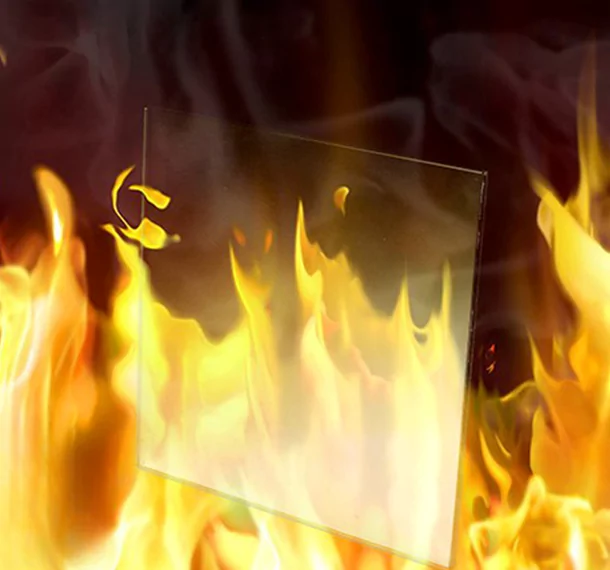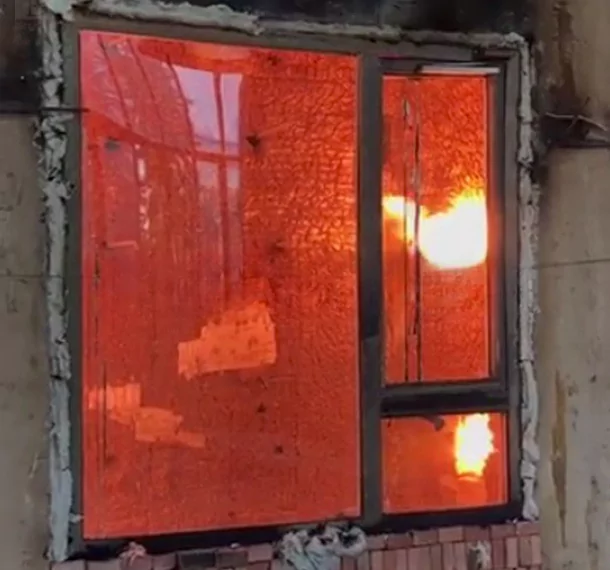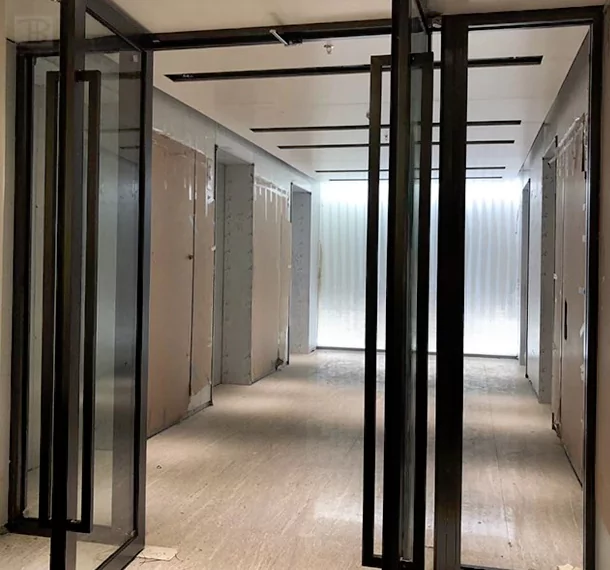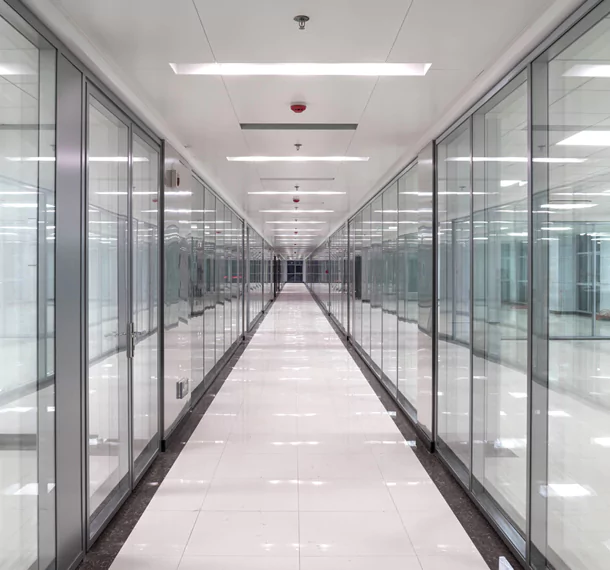
SINGLE LAYER FIRE-RATED GLASS
Learn more
DOUBLE LAYERS FIRE-RATED GLASS
Learn more
FIREPROOF GLAZING WINDOWS AND DOORS
Learn more




To construction and design, the materials we choose can mean the difference between safety and disaster. fire rated glass stands at the forefront of this critical conversation, merging functionality with aesthetic appeal. as we delve into the world of fire rated glass, we will explore its ratings—e, ew, and ei—understand its myriad benefits, examine its applications across various industries, and look ahead to the innovations shaping its future in Uzbekistan.
Fire resistance is not merely a regulatory requirement; it is a vital component of building safety that protects lives. the ratings assigned to fire rated glass—e, ew, and ei—are essential indicators of how well these products perform under fire conditions.
- e ratings signify that a product has been tested for integrity; in other words, it will remain intact during a fire without allowing flames or heat to pass through.
- ew ratings take this a step further by demonstrating not only integrity but also limited radiation control. this means that while flames are contained on one side of the glass panel, some heat radiation is allowed through—a crucial feature for maintaining visibility while ensuring safety in Uzbekistan.
- EI ratings encompass both integrity and insulation properties. this rating ensures that during a fire event, the temperature on the non-fire side remains within safe limits—a critical factor in protecting occupants as they evacuate.
These ratings is paramount for architects and builders who must comply with stringent building codes designed to protect inhabitants from fire hazards. when specified correctly in construction plans, fire rated glass can be an invaluable asset in creating safer environments.
The advantages of incorporating fire rated glass into your projects extend beyond mere compliance with regulations; they encompass enhanced safety features as well as aesthetic versatility.
One cannot overlook the safety features inherent in fire resistant glass. it acts as a barrier against flames while providing clarity for visibility during emergencies. this transparency fosters an environment where natural light can flow freely without compromising security or safety—a dual benefit that is often hard to achieve with traditional materials like concrete or brick.
There’s an undeniable aesthetic versatility associated with using fire rated glass. gone are the days when safety meant sacrificing style! today’s architects are embracing sleek designs that incorporate expansive panes of tempered or laminated glass into their structures. whether used in office buildings’ facades or residential homes’ interior partitions, this material offers elegance alongside resilience—making spaces feel open yet secure.
The applications for fire rated glass are vast and varied across different sectors—from commercial buildings to residential spaces—and each use case demonstrates its vital role in safeguarding lives.
In commercial buildings, such as offices or retail spaces where foot traffic is high but escape routes must be clearly defined without obstruction from solid walls or doors; integrating this type of glazing provides peace-of-mind protection while maintaining an inviting atmosphere for customers and employees alike.
For residential use, homeowners increasingly opt for stylish yet secure solutions like sliding doors made from fire resistant materials leading out onto patios or balconies—allowing them both beauty outdoors while ensuring their families remain protected inside their homes should disaster strike unexpectedly.
Additionally, public spaces such as airports or hospitals benefit immensely from implementing safety barriers made from fire rated glass. these installations help manage crowd flow effectively during emergencies by providing clear sightlines alongside containment strategies designed specifically around life-safety protocols established by local authorities—all while upholding modern design standards expected today!
As technology advances at breakneck speed within construction industries worldwide so too does innovation surrounding products like our beloved friend—the ever-reliable (and stylish!) “fire-rated” counterpart! emerging trends suggest exciting developments on horizon which promise even greater efficiency & performance than before!
Look out particularly for advancements involving smart technologies integrated directly into glazing systems enabling real-time monitoring capabilities regarding temperature fluctuations & structural integrity assessments throughout lifespan installations! imagine being able not only monitor potential risks proactively but also receive alerts if any anomalies detected could compromise overall effectiveness preventing catastrophic failures down line!
Furthermore emerging sustainable practices focusing on eco-friendly manufacturing processes will likely gain traction over coming years resulting reduced environmental impact associated traditional production methods typically utilized today – paving way toward greener future together whilst still prioritizing utmost levels protection against fires everywhere!
In conclusion—the marriage between form & function showcased through innovative uses modern-day "fire-rated" solutions represents true evolution industry itself! as we move forward embracing new possibilities remember importance investing wisely choices made today ensure brighter safer tomorrow generations come after us all!
Fill the form below to get in touch with us.
Fire-rated glass plays a pivotal role in maintaining the integrity of structures during infernos. This specialized form of glass has been engineered to resist fire spread for an extended period, acting as a protective barrier between flammable materials and flames. Fireproof glazing can be integrated into various building components like windows, doors and partitions to enhance overall fire safety.
Fire-rated glass is often utilized in commercial buildings, schools, hospitals and residential structures in order to comply with fire codes. A number of factors contribute to its fire resistance rating - its thickness, composition and protective coatings or interlayers all have an effect. It may even serve as a protective measure during emergencies.
Fireproof glass can help limit smoke and heat spread, giving time for evacuation or firefighting efforts to take place.
Fire Resistant Glass for Improved Security
Investing in fire resistant glass can be an essential element of ensuring the security and safety of any structure. These durable panes can withstand high heat levels, providing vital protection against flames and smoke spreading rapidly throughout a building. Fireproofing these panes with exceptional thermal performance gives occupants more time to evacuate in an emergency scenario.
Fireproof glass features advanced materials and coatings to increase its durability and resistance to impact, making it the perfect choice for applications such as high-rise buildings or public areas where safety regulations are stringent.
Fire-resistant glass displays an undying dedication to safety, providing building owners and occupants with peace of mind and helping mitigate risks in order to create a more secure environment for all. It is an investment with real returns; make the choice now to achieve long-term peace of mind for yourself and all involved!
Fire Protection Glass: Shielding Structures
Safety in construction and architectural planning is of utmost importance, with fireproof glass playing an essential part in safeguarding buildings from the dangers of fire by providing an invaluable barrier against heat, flames, and smoke.
Engineered glass has been specially developed with properties that make it extremely heat resistant, often interlayered to form thick sheets with thermal barriers to block heat transference and flame spread.
Fire protection glass can help contain fires and keep them from spreading to nearby areas, giving evacuation teams and fire fighters time for evacuation and combat efforts.
Advanced Solutions for Fire Safety
Fire safety is of utmost importance across various sectors, from residential buildings to industrial facilities. As technology progresses, innovative fire protection measures such as anti-fire glass have come to prominence as effective means of protection in emergency situations. This solution contains formulae designed specifically to resist flame spread; providing vital layers of defense.
Anti-fire glass achieves its remarkable qualities through layers crafted specifically to its design, typically including fire-retardant chemicals or filaments which act to neutralize heat and flames, thus effectively stopping fire from spreading.
Installing anti-fire glass can significantly enhance the structural integrity of buildings by creating a barrier against fire spread, providing safe retreat for occupants in emergency situations.
Anti-fire glass also offers aesthetic advantages, with various configurations to fit seamlessly into building designs. This adaptability enables architects and designers to implement fire safety solutions seamlessly within building designs.
Even with its many advantages, anti-fire glass should never be treated as an autonomous solution; rather it should always be combined with other fire safety measures like emergency exits to create an all-encompassing and effective fire protection plan.
Construction Projects Dedicating to Safety At its core, construction involves safeguarding lives and property. One key element contributing to an indestructible building is fireproof glass - an indispensable feature. Engineers incorporating it into walls, doors and other building elements can dramatically increase resistance against fire in their designs to safeguard lives and property from an emergency situation.
Fire-rated glass provides an important defense against flames quickly spreading throughout a building, as well as keeping smoke within bounds - something which obstructing evacuation efforts requires. Furthermore, these special glasses often boast properties such as thermal insulation that add to their durability.
Fire-rated glass manufacturers meet industry standards by using advanced materials in the fabrication of their products to guarantee reliable and effective protection in case of fire. Installing such fireproofing materials should only ever be done by qualified professionals who possess expertise to guarantee proper installation and functionality.
Selecting the ideal fire-rated glass Uzbekistan for any application is of vital importance, as its various ratings offer different degrees of fire resistance. This decision must take into account such variables as the building's intended use, occupancy load and local fire codes to provide structures that not only look beautiful but are safe in case of fire. By carefully choosing fireproofed glasses for these projects architects can build structures that offer both aesthetic appeal and increased fire safety during an incident.
Fire-Resistant Glass Properties Fireproof or heat resistant glass (more commonly referred to as fire-rated glass Uzbekistan ) is designed to withstand extreme temperatures, providing critical protection during fires by slowing flame spread and temperature rise. Composition, thickness and treatments determine its effectiveness as an effective fire barrier.
One key characteristic of fireproof glass is its high melting point, enabling it to maintain structural integrity even at extreme temperatures. Furthermore, this material often includes special layers or coatings designed to minimize heat transference.
These techniques can significantly decrease the amount of heat passing through glass, further strengthening its fire-retardant capabilities.
Understanding these attributes of fireproof glass is critical for architects, engineers, and builders when selecting it for applications like firewalls, doors, and windows. By choosing an appropriate type of fireproof glass they can ensure a level of fire protection that conforms with building codes and safety regulations.
Fireproof glass plays an integral role in safeguarding structures from fire damage. Constructed to withstand extreme heat and flames, its purpose is to act as a shield that helps control flames safely while providing safe evacuation routes. It comes in various categories and implementations to meet all kinds of situations and needs.
There are various kinds of fireproof glass, each offering different properties and applications. Some common varieties are monolithic glass, wired glass and tempered glass - these typically refer to single panes of ordinary glass that has been treated to increase its heat resistance; wired glass contains an embedded mesh of wire for strengthening purposes; while tempered glass has been processed to be significantly stronger than its regular counterpart - and is commonly used where impact resistance is important.
Fire protection glass has multiple uses in many environments, such as:
* Fireproof walls that divide fire-prone areas from other parts of the facility
* Windows and doors located along escape routes such as stairwells, corridors and other crucial spaces
* Lightwells in industrial buildings and warehouses
* Emergency escape plans and balconies
Selecting an appropriate type of fire protection glass depends upon its intended use, severity of potential fire risk and other relevant considerations.
Picking the Appropriate Fire Rated Glass
When adding fire safety measures to your building, selecting fire-rated glass is of critical importance. This type of material can withstand heat transfer while stopping flames from spreading - providing essential protection from fire if one breaks out. When making this selection, factors such as your required fire resistance rating, placement within your structure and desired aesthetic appeal must all be taken into consideration before selecting what might be considered the optimal fire-rated glass solution for you. A professional consultant can assist in helping determine what may be ideal based on these parameters.
Consult a certified fire safety expert for expert guidance when selecting an appropriate type of fire rated glass. Do your research on various types and their properties; verifying compliance with all relevant building codes and safety standards will also help narrow your search down.
Fire Rated Glass Systems: Functionality and Aesthetic Fire-rated glazing systems are integral elements in building design, providing essential fire resistance and safety. Constructed of multiple layers of glass interlayers designed to withstand intense heat from flames for a specified duration, fire-rated glazing prevents not only fire spreading but also helps contain smoke and debris to protect both occupants and property against danger. Performance testing ensures these systems adhere to industry regulations to guarantee they fulfill any necessary safety regulations.
Fire-rated glazing systems not only protect buildings from fire hazards but can also add visual appeal to them. Available with various glass types and configurations, these systems enable architects to design visually striking designs while upholding essential safety standards.
Selecting fire-rated glazing depends on the needs and specifications of a given building project. Assemblage thickness, fire resistance rating, interlayer material choice are all crucial considerations when making this selection.
Fire Code Regulations for Glass
Building fire safety should always be top of mind. Building codes impose stringent rules to safeguard structural integrity and occupant wellbeing in case of fire, with one critical aspect being fire-resistant glass which has been designed to withstand high temperatures for an extended period, thus limiting flame spread and heat dispersal. Fire Codes often specify minimum requirements for using this material such as walls, doors or windows.
Fire resistance ratings vary depending on a building's occupancy type, size, and construction materials; high-rise structures that house sensitive machinery require higher levels of fireproofing than residential structures; moreover building codes often specify specific testing procedures to verify fire resistance performance of glass products.
Complying with fireproof glass requirements is of utmost importance in order to safeguard lives and minimize property damages in case of fire.
Fire Rated Glass Compliance
In order to safeguard public safety and structural integrity, fire-rated glass products must adhere to stringent compliance regulations. Building codes and industry standards such as UL 10B provide clear criteria regarding fire resistance - for instance how long they can withstand heat exposure without melting, as well as their capacity to stop flames spreading further.
Manufacturers must undergo stringent testing and certification processes in order to verify that their fire-rated glass meets stringent fire safety standards. This ensures that construction projects using fireproof glass for windows, doors or partitions contribute effectively to improving fire safety.
Installing fire protection glass into your building provides numerous advantages. Specifically designed to inhibit the spread of fire, fireproof glazing helps ensure occupants and properties are safeguarded during an incident. Furthermore, its heat-resistive qualities may allow people more time to evacuate safely while its aesthetic qualities contribute to an attractive architectural environment as well as sound insulation benefits and energy savings.
Limit the risk of fire spread throughout a building
Increase occupant safety during an emergency by giving evacuation and response efforts time, while improving aesthetic appeal of the structure.
Promote more energy-efficient, environmentally sustainable glass buildings for fire safety purposes.
Case Studies Utilizing Fireproof Glass Fire-resistant glass is an integral component in building safety and structural integrity, as demonstrated in multiple case studies that demonstrate its success at preventing fire spread while providing essential evacuation protection. At one high-rise office building, fireproof glass panels were utilized to successfully contain and prevent an outbreak from spreading to adjacent floors, thus providing residents with enough time and safety to evacuate safely. Another case study highlights the use of fireproof glass at a railway station. Here, the glass curtain wall stood strong against intense heat and flames caused by an accident with no harm coming to passengers sheltered behind its wall. Such cases demonstrate why incorporating fire-resistant glass into building designs to increase safety measures is so essential.
Airport studies demonstrate the critical role that fire-resistant glass plays in maintaining passenger safety. Fireproof partitions and windows help compartmentalize fire outbreaks within terminals to help facilitate more orderly evacuation processes and mitigate against widespread damage risks.
Therefore, the successful use of fireproof glass in these diverse settings demonstrates its adaptability as a safety measure.
Recent Advances in Fire-Rated Glass Technology
Fireproof glass technology has seen tremendous advances, driven by an ever-increasing need to provide increased protection and performance across a variety of applications ranging from building facades to fireproof doors.
Modern fire-rated glass utilizes advanced compositions and manufacturing processes that enable it to provide superior fire protection, providing safe containment of fires while safeguarding both lives and properties.
One key innovation is ceramic coatings, which successfully inhibit heat transfer and stop fire spread.
Innovations in glass structure have enabled thicker panels that can withstand intense temperatures for prolonged periods, thus increasing longevity.
Fire-rated glass technology continues to advance thanks to research and development efforts geared at increasing safety, performance and visual appeal.
Maintaining Fire-Rated Glass for Maximum Performance
Proper care of fireproof panes is key to their long-term performance and should never be underestimated as an important layer of safety in emergencies. Regular inspections will identify issues such as cracks, contamination buildup or malfunctioning hardware which must be rectified quickly in order to maintain its fire-resistance rating and fulfill their intended roles effectively.
Cleaning fire-rated glass should be completed using a mild, neutral solution that won't damage its surface, such as detergent or an alcohol solution. Avoid using tools with sharp edges or chemicals that contain harsh solvents which could potentially reduce its fireproof qualities and even change its fire resistance rating.
Cracked sealant around the perimeter of fire-rated glass should be assessed regularly to ensure optimal conditions and provide security for years to come. By adhering to these recommendations, you can help ensure your fireproof glass stays in top shape for years of reliable use.
Fireproof Glass Vs Regular Windows
When selecting panes for your building, it's essential to understand your security requirements. Standard glazing offers limited heat shielding; in contrast, fire-resistant or safety glass has been specially engineered to withstand intense temperatures for extended periods of time, making it the optimal solution in places like fireplaces where safety must be prioritized.
Fireproof glass can help limit the spread of fire. Regular windows are more vulnerable to intense temperatures; with fireproof glass providing protection from falling debris.
Fireproof glass serves as an essential safeguard against the spread of fire. To ensure its effectiveness, extensive analysis procedures must adhere to stringent industry standards; testing involves subjecting it to extreme temperatures, flames and pressure differentials that mimic real world fire scenarios. Based on performance findings in these tests, certified organizations award certification to fire protection glass as proof that it satisfies predetermined safety requirements while safeguarding lives and property in case of fires.
Fire Resistant Glass for Residential and Commercial Structures Fireproof glass plays an essential role in modern residential and commercial structures. Designed to withstand fire's spread and allow time for evacuation while mitigating damages, it utilizes special materials and construction methods to achieve a specific fire resistance rating, measured in hours.
Fire-rated glass has numerous applications across different aspects of construction. This material can be found in interior walls, partitions, doors, windows and stairwells to divide areas or act as fire barriers while creating space dividers and creating fire barriers.
Fire-rated glass protects homes in residential structures from flame spread during emergencies or multi-family structures, while commercial applications include protecting occupants in office buildings, shopping malls and other high-traffic areas.
Fire-rated glass can add aesthetic features while upholding safety regulations in architectural designs, providing an appealing combination. When selecting fireproofing glass it is vitally important to consult local building codes and fire safety regulations to ensure compliance.
Fire-Rated Glass' Role in Disaster Preparedness
Time is often of the essence during times of disaster. Preparing with fireproof and smoke-proof glass solutions can greatly increase chances of survival by providing necessary protection from fire, smoke and fumes while simultaneously helping contain and escape from flames safely while helping maintain structural strength under extreme heat levels.
Buildings featuring fireproofed glass elements offer numerous advantages during times of disaster.
* Fire suppression systems help control the spread of fire by keeping it confined within specific areas, rather than spreading throughout an entire structure.
* These systems enable occupants to safely escape in an emergency by offering clear routes.
* Maintenance services help keep essential equipment functioning.
Fire-rated glass should be an essential component of any comprehensive disaster preparation strategy. It provides invaluable safety and protection from fire or other emergencies, making it a vital safeguard both for buildings and occupants alike.
Fire-retardant glass plays an integral part in protecting both lives and property from the devastation caused by fire. By withstanding intense flame, this specialized material acts as an obstacle against rapid spread of flames and smoke, giving people time to evacuate safely before the risks of destruction are realized. Furthermore, its increased structural stability reduces risks of destruction further still.
Fire resistant glass has become increasingly popular as an essential way of improving fire safety in commercial buildings, hospitals, schools and homes alike. Its versatility makes it an invaluable asset in terms of mitigating fire damage while increasing fire prevention measures.
By integrating fire resistant glass into building designs, we can create safer environments and shield human lives and property against fire risks.
Glass as the Next-Generation Fire Protection Solution
Architectural designers have long used glass in architectural design, but its uses continue to expand and diversify with every generation. Now more than ever before, fireproofing structures is becoming a priority, making glass an increasingly viable material choice.
Recent advancements in glass technology have resulted in innovative fire-resistant options of glass that feature exceptional capabilities. These solutions can withstand extreme heat while protecting from flame spread by providing a barrier.
Furthermore, fireproof glass options can be visually aesthetically pleasing and easily integrate with existing designs, providing stylish yet practical fire protection solutions. When used for partitions they provide stylish protection while still remaining fire-safety measures.
Fire-rated glass is a crucial component in ensuring safety and aesthetics in architectural design. Here are three successful projects where fire-rated glass Uzbekistan has been effectively used as glass doors or glass walls:
1. Project Name: The Prism Tower_
- Effects: The use of fire-rated glass Uzbekistan doors in the lobby area not only enhances the visual appeal but also ensures that the building meets safety regulations by providing a barrier against fire spread in Uzbekistan.
2. Project Name: Skyline Residence_
- Effects: Incorporating fire-rated glass walls in communal areas like stairwells and hallways creates a modern and open atmosphere while maintaining compartmentation for fire protection.
3. Project Name: Innovation Hub Headquarters_
- Effects: Utilizing fire-rated glass partitions between office spaces promotes natural light flow, fosters collaboration, and ensures compliance with building codes for fire safety measures.
These projects showcase how fire-rated glass can seamlessly blend functionality with design aesthetics to create safe and visually appealing spaces.
Our Location in Uzbekistan:Mehktar Ambar Street,Uzbekistan,Uzbekistan
방화 유리 용주(永州)
ОГНЕЗАЩИТНОЕ СТЕКЛО Караганды
VIDRIO RESISTENTE AL FUEGO Lafayette
زجاج مقاوم للحريق دير الزور
FIRE-RATED GLASS Mombasa
زجاج مقاوم للحريق القضارف
VIDRIO RESISTENTE AL FUEGO Williamsburg
VIDRIO RESISTENTE AL FUEGO Ciudad de Yuba